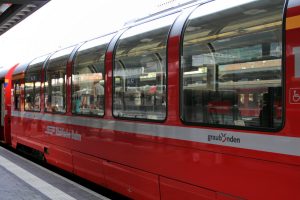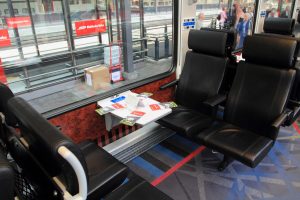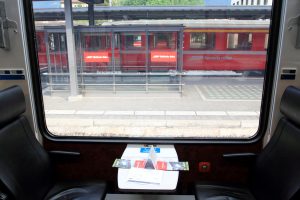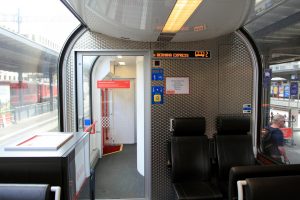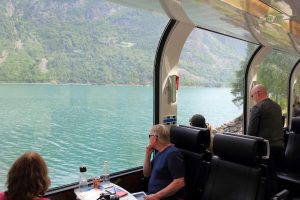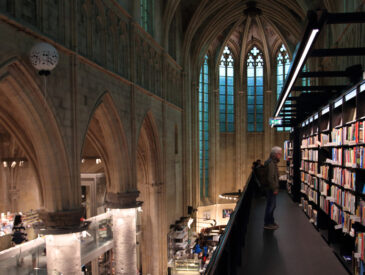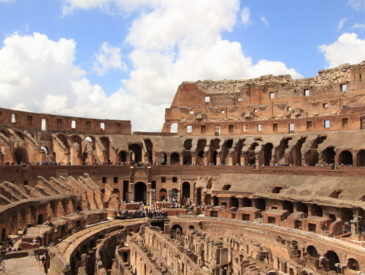
Boarding
With a single departure each day, it does require an early start – although we had made our lives easier, and eliminated the risk of a missed connection, by positioning to Chur from Zurich the night before.
Service is provided with modern electric trains, with all carriages featuring large viewing windows; we’d stretched to first class for even bigger windows, plus a more spacious 1-2 seating arrangement and hence fewer people. This also meant less competition for the limited luggage space – obviously there are no overhead racks! We weren’t the only ones making a one-way journey, but fortunately we managed to stash our case between some of the double seats across the aisle. There was a wifi service, but not to reach the internet – instead, it offers an audio guide to the landmarks along the way. This dubiously named InfoT(r)ainment system appears to only be available in first class.
The panoramic windows are excellent for viewing – like the Coast Starlight, the larger ones in these carriages continue to curve upwards into the roof, ideal for gazing up into the mountain ranges during ascent and descent. They turned out to be less good for taking photos through, due to a combination of tint and reflection. Each car does have a vestibule area with a window that opens, but expect this to be hotly contested by photographers, especially at key points of the trip (One guy in particular was insistent that he would not be sharing). At less remarkable moments of the route this also offered a pleasant way to get a lungful of fresh alpine air!
The Route
I attempted to record the precise route, but the route’s meanderings around and through the Alpine landscape – coupled with the train being a sturdy metal box – largely conspired against effective GPS logging. Still, the breadcrumbs I captured give some idea:
Alternatively, if you’d prefer a more detailed recreation than my ramblings, the entire route has been captured on google street view! You can find that here.
The Highlights
It’s honestly difficult to pick out particular sections as being a highlight – about the only time we weren’t gazing out the windows was when working through tunnels. I’ve put a more extensive gallery of pictures in the section below, but first here are some of the famous features of the journey.
Landwasser Viaduct
When travelling in the Chur to Tirano direction, this lofty crossing is doubly striking, as the track immediately enters the Landwasser tunnel from the span of the viaduct. For that reason it’s become a signature of Rhaetian Railways, with both the Bernina Express and sister service the Glacier Express travelling along it. On-board the elevation is less obvious, but from first class the curvature allows an excellent view of the front of the train entering the tunnel. Sadly I only managed to take this terrible photograph from the carriage, having been crowded out of the vestibule:
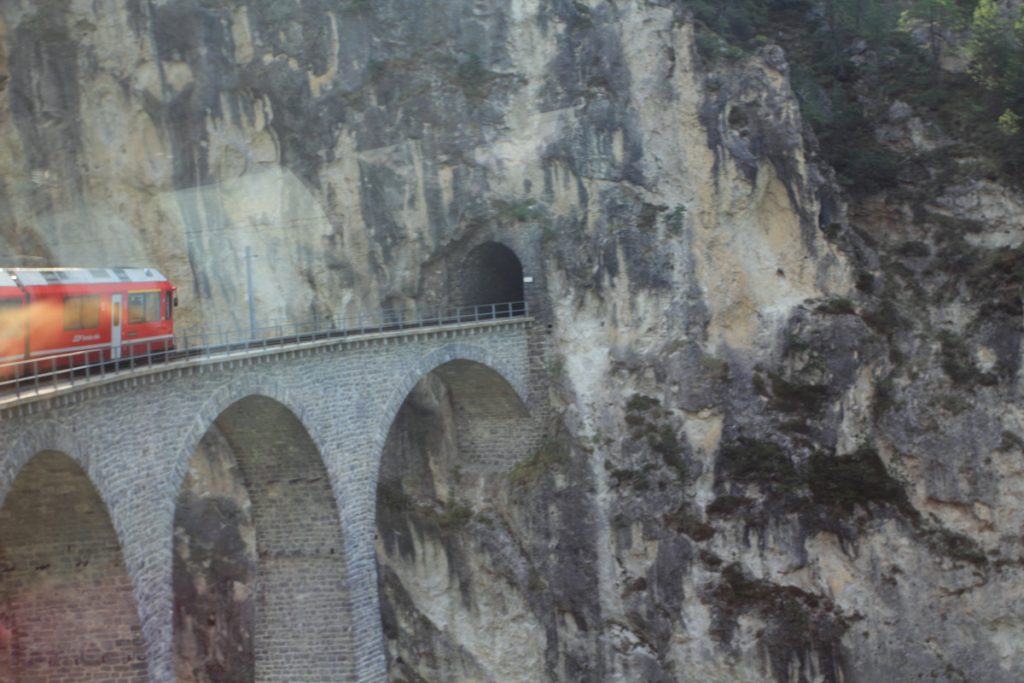
The Bernina Pass
Having spent much of the past week sweltering through temperatures of 30°C and above, the prospect of snow seemed remote. Yet as we steadily climbed, so the temperature dropped. By the time we reached the highest point at Ospizio Bernina, we found ourselves following the ice-strewn shores of frozen Lago Bianco, against a backdrop of snowy mountains. A remarkable contrast with recent conditions – all the more so as our descent would eventually bring us back into Italian summer heat.
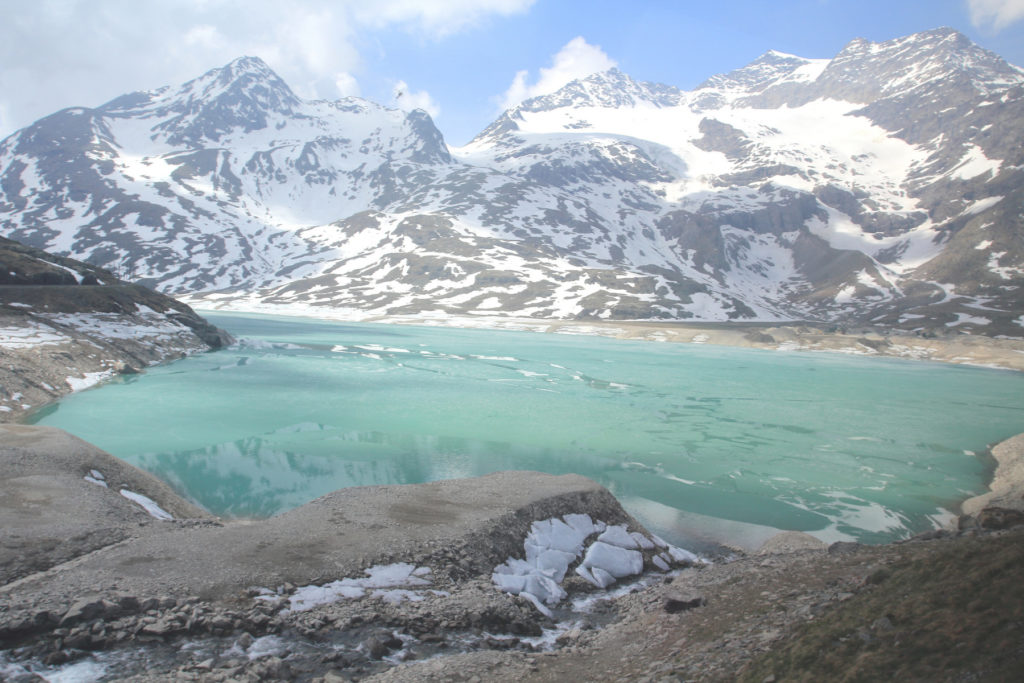
Alp Grüm
This station is an extended stop, for around 15 minutes. This allows for some fresh air, a stretch of your legs, and some stunning views of both glaciers in the mountains behind, and the Italian flavour of the Poschiavo valley ahead. The charming stone station also has a hotel and restaurant, for those who might wish to stay a little longer.
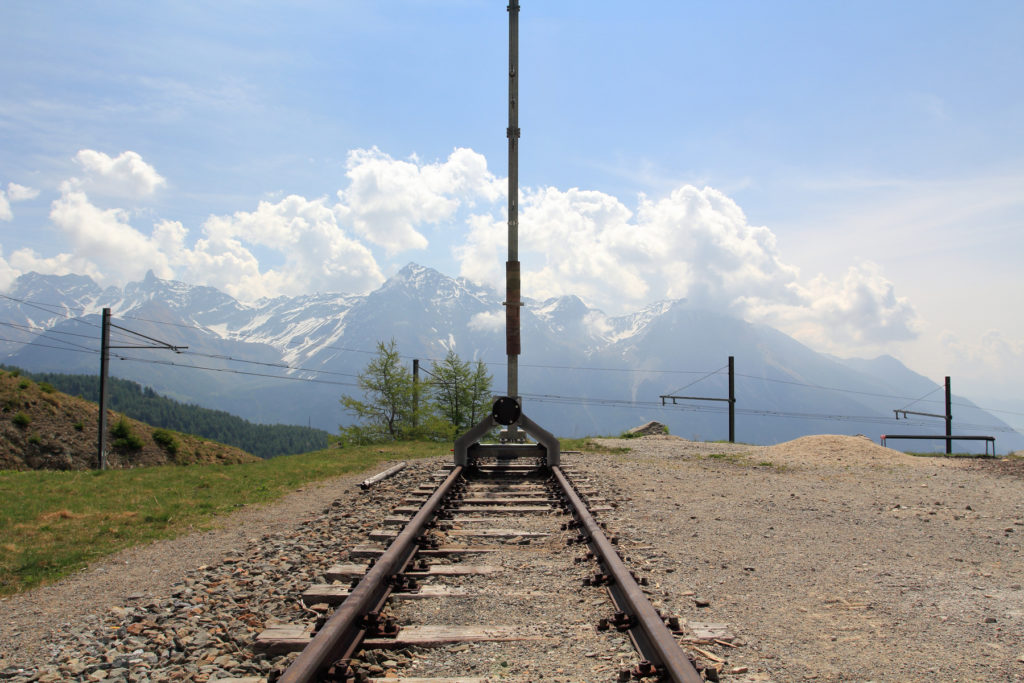
Lago di Poschiavo
The zig-zagging descent into the valley offers advance previews of this lake, appealing views in their own right. But the track turns out to run alongside its entire western shore, in places seemingly close enough to touch the water. At its southern limit the track continues to follow the perimeter, offering a glimpse back up the valley of the progress made from the now-distant mountains.
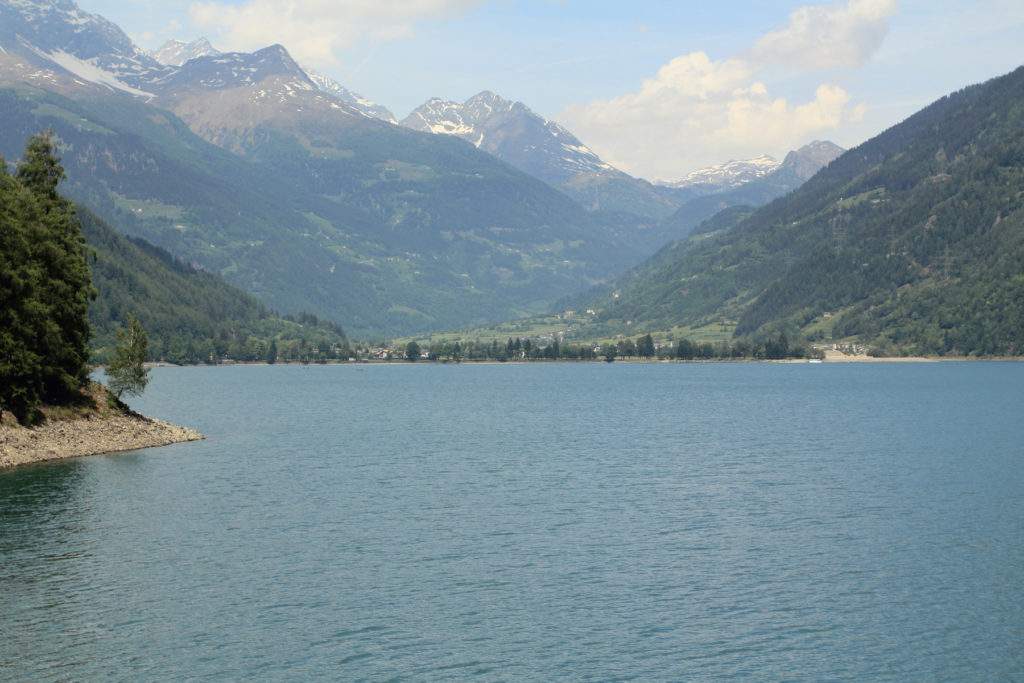
Brusio Circular Viaduct
The Bernina Railway’s other iconic feat of engineering is this spiraling structure, designed to cap the gradient of the route at 7° – thus ensuring safe descents and viable ascent. It’s a bittersweet moment for this direction of travel, as it also marks the train’s imminent arrival in first Italy, and then Tirano. As well as looping under the track, we also went through a water arch – but whether this was for the benefit of the passengers, or just the grass at the centre of the circle, was unclear!
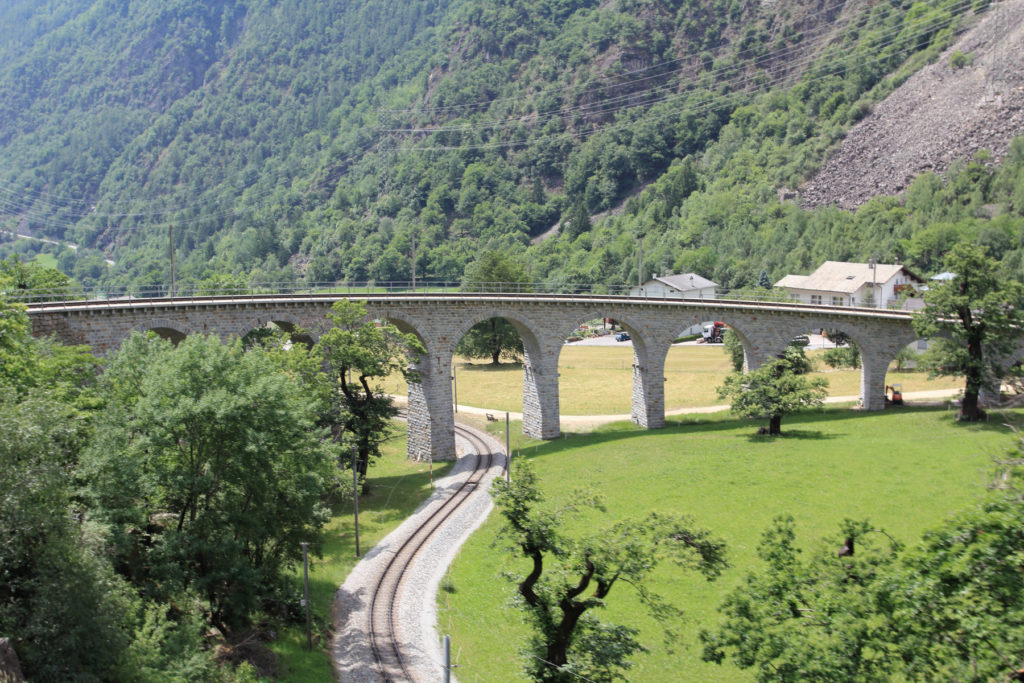
Photos
Despite the challenging conditions – and wanting to enjoy the experience myself, rather than just through a viewfinder – I naturally ended up with plenty of shots from along the way. I’ve collected the better ones into the following post.
